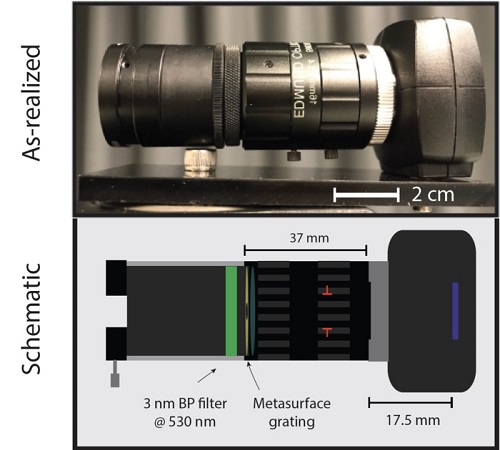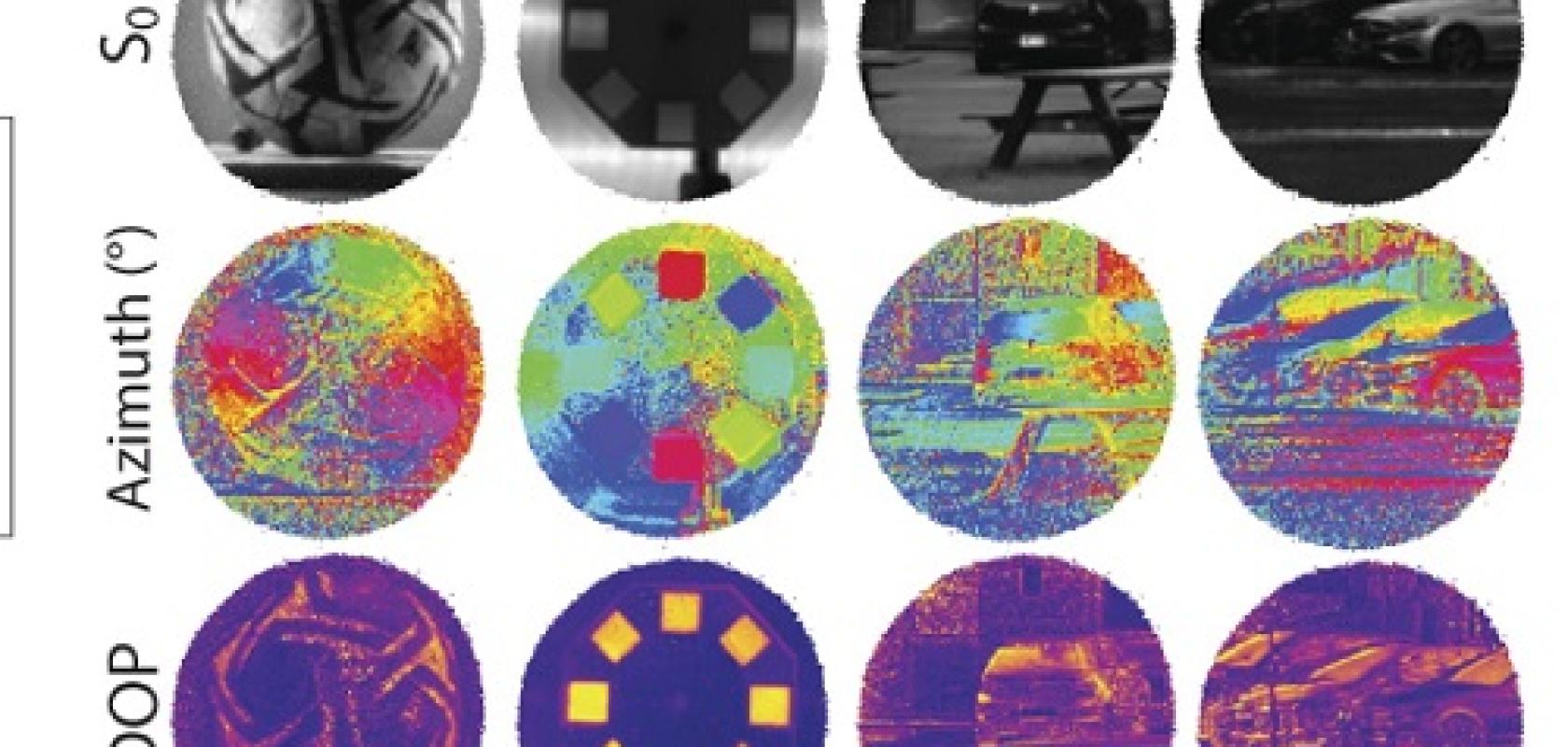Harvard researchers have developed a metasurface attachment that can turn any imaging system into a polarisation camera.
The attachment is a metasurface grating containing subwavelength nanopillars that direct light based on its polarisation. The camera with the attachment compiles an image that captures polarisation at every pixel.
The research from the Harvard John A. Paulson School of Engineering and Applied Sciences (SEAS) is published in Optics Express.
As a demonstrator, the scientists attached the polarisation metasurface to an off-the-shelf machine vision camera, simply screwing it on in front of the objective lens, in a small tube that also housed a colour filter and field stop. From there, all they needed to do was point and click to get polarisation information.
Metasurfaces are optical components containing an array of structures smaller than the wavelength of light. These pillar elements are designed in such a way as to shape how light interacts with the surface.
The nanopillars on this particular metasurface grating direct light based on polarisation, which forms four images, each showing a different aspect of the polarisation. The images are then put together, giving a full snapshot of polarisation at every pixel.
‘The addition of polarisation sensitivity to practically any camera will reveal details and features that ordinary cameras can’t see, benefiting a wide range of applications from face recognition and self-driving cars to remote sensing and machine vision,’ said Federico Capasso, the Robert L. Wallace Professor of Applied Physics and Vinton Hayes Senior Research Fellow in Electrical Engineering at SEAS, and senior author of the study.

The grating is mounted just in front of the front face of a chosen objective lens in a tube that also houses a bandpass filter and a field stop. This is shown implemented (top), as a schematic (bottom). Credit: Capasso Lab/Harvard SEAS
In 2019, Capasso and his team developed a compact, portable camera that used a metasurface to image polarisation in a single shot. In this research, the team explored how to generalise the concept of a polarisation camera.
‘After building the specialised polarisation camera, we wanted to go more in depth and investigate the design rules and trade-offs that govern pairing a special polarisation component with a conventional camera system,’ said Noah Rubin, a graduate student at SEAS and co-first author of the study.
‘This metasurface attachment is incredibly versatile,’ added Paul Chevalier, a postdoctoral research fellow at SEAS and co-first author of the study. ‘It is a component that could live in a variety of optical systems, from room-size telescopes to tiny spy cameras, expanding the application space for polarisation cameras.’


